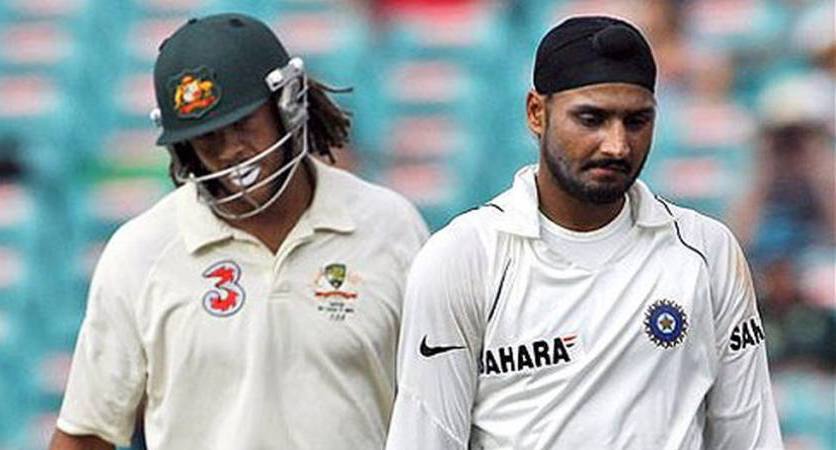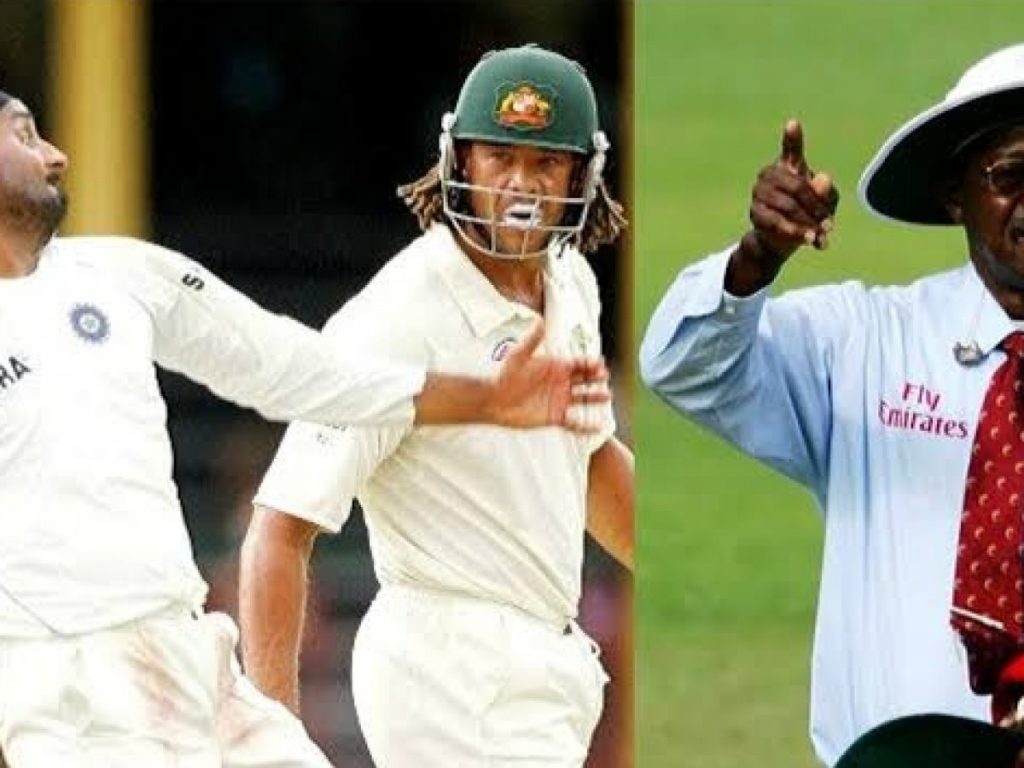Remembering the ”˜Monkeygate’ Sydney Test

By Kersi Meher-Homji
I have never missed a Sydney Test since 1970. I cannot wait to watch the current one about to start on Thursday. They have produced drama, controversies and brilliant batting especially by maestro Sachin Tendulkar and VVS Laxman.
The “monkeygate bollyline” Sydney Test involving Harbhajan Singh and Andrew Symonds in January 2008 was the most controversial.
However, the Test about to start on Thursday has stirred controversy before a ball has been bowled. Call it a “Covid-gate” Test or perhaps a protocol-phobic phenomenon!
Rank bad umpiring decisions and cultural ignorance made the 2008 match one of the most unpleasant in Test history. To me it was a mini TV series, blowing up of minor incidents into mega furores with cultural misunderstandings galore.
As Greg Baum wrote in Wisden 2008, “Bollyline in Sydney will go down in history as a kind of cricketing six day war. It was too real and nasty while it was happening, but it was over almost as soon as it had begun.”

The lowlights of this match were the poor umpiring of Steve Bucknor and Mark Benson who made numerous howlers and the Indian captain Anil Kumble’s comment at the press conference at the end of the match, which India lost with just nine minutes remaining, that “Only one team was playing in the spirit of the game.” It was reminiscent of the Bodyline series of 1932-33 during which the Australian captain Bill Woodfull had made a similar comment.
Was Harbhajan calling Symonds a ”˜monkey’ (or a swear word in Hindi), a racist comment or a sledge? To understand the implication of monkeygate, one has to go back a few months when Australia toured India for a series of seven one-day internationals. Symonds was the Man of the Series on that tour, scoring the most runs (365) and topping the averages (73) with a strike rate of 110. “His fielding was boisterously electric,” wrote Anand Vasu in Wisden 2008. Symonds being compared with master blaster Viv Richards did not appear over the top as Australia triumphed 4-2.
However, that one-day series is also remembered for shameful behaviour by sections of the Indian crowd during matches in Vadodra and in Mumbai, where Symonds was subjected to monkey chants. The villains were caught on camera in Mumbai and thrown out. Symonds, who had entertained the crowds with his spectacular batting and fielding, must have felt devastated at this shocking treatment. He was the only dark cricketer among white Australians and it appeared racial abuse. If Symonds felt insulted he did not show it till the Sydney Test of January 2008.
Australia made a poor start on a good batting pitch in the above Test losing 6 for 134, Ponting given not out when out on 17 and declared out when not out on 55. India was on top until Australia was rescued by Symonds and Brad Hodge adding 173 runs, a record for the seventh wicket in a Sydney Test. But Symonds was lucky. Australia was 6 for 193 and Symonds 30 when he edged teenage fast-medium bowler Ishant Sharma for a catch behind but umpire Bucknor did not hear it. At the press conference Symonds admitted he was out. He was given two more lives by the umpire when on 48 and on 148. His unbeaten 162 included 18 fours and two sixes.
Oh for an RBS technology!
No wonder the Indians were seething with rage as Symonds with “life-long immunity” guided his country from a lacklustre start to an imposing 463. Far from being despondent, the Indian batsmen replied strongly, Laxman playing a gem of an innings of 109, his third consecutive century on the SCG.
At the other end was Tendulkar, not as elegant but just as prolific, also scoring his third successive Test hundred on the SCG. His unbeaten, chanceless and faultless innings of 154 brought his batting average on this, his favourite ground, to 221.33. He added 108 for the fourth wicket with Ganguly (67 runs) and 129 for the ninth wicket with Harbhajan (63) and India totalled 532, to gain a 69-run lead a few minutes before stumps on day three. It was during the Tendulkar”“Harbhajan partnership that the Bollyline drama unfolded.
On the third day of the Test, 4 January 2008, India was seven wickets down for a score of over 400. In the 116th over, Harbhajan dug out a yorker from fast bowler Brett Lee and took a single.
Wicket-keeper Adam Gilchrist wrote in his autobiography True Colours ”“ My Life (2008):
They [India] were passing our total, with Harbhajan taking a few lusty swings, when he got one away to fine leg off Brett Lee. As he jogged through for the single Harbhajan gave Brett a light, inoffensive pat on the backside. Brett looked over his shoulder and gave Harbhajan a rueful sort of half smile. The next thing I saw, Symo [Symonds] had come across the wicket while changing his position and said to Harbhajan something like, “Don’t touch him, you’ve got no friends out here.” Harbhajan never needed an invitation for a bit of banter, and Symo had given him one. So it was on again, the bickering between the two of them ”¦ Then at the change of ends, I heard Haydos [Matthew Hayden] and Harbhajan talking to each other. “You’ve got a witness now,” Haydos was saying.
Gilchrist saw Ponting, Tendulkar and Harbhajan, standing on the wicket, talking. Then he heard Harbhajan say to Ricky, “Sorry, I apologise, it won’t happen again.” Gilchrist added in True Colours, “Both Symo and Haydos had heard him call Symo a monkey.”
Umpire Mark Benson spoke to Harbhajan. The bearded Indian of almost the same skin colour as Symonds continued batting and scored 63 out of India’s total of 532. At stumps, India’s skipper Kumble apologised to rival captain Ponting and requested him to talk the matter over and not report it to match referee Mike Procter. Ponting, no stranger to sledging, told Kumble that he had already reported the incident to Procter.
That very night at 10.30pm Harbhajan was charged with “using language or gestures that offend another person on the basis of race, religion, gender, colour, descent or national or ethnic origin”.
There are two versions as to what Harbhajan had told Symonds. The umpires had not heard what was actually said, nor had the stumps-audio recorded what was said. So it was the Australians’ word against the Indians’ and Procter accepted the Australian version. This angered the Indian cricketers and their followers. Sunil Gavaskar, India’s legendary batsman and then ICC cricket committee Chairman, wrote in his newspaper column, “millions of Indians want to know if it was a white man’s word against that of the brown man”.
After a hearing that lasted over four hours on 7 January, a day after the Test concluded, an announcement was made that Harbhajan was given a three-Test ban. Procter stated, “I am satisfied beyond a reasonable doubt that Harbhajan Singh directed the word [monkey] at Andrew Symonds and also that he meant it to offend on the basis of Symonds’s race or ethnic origin.” Later he told the Sydney Morning Herald that this was not a case of just taking the word of an Australian over an Indian.
What infuriated the Indian team was how Procter was “satisfied beyond a reasonable doubt” that Harbhajan had uttered the word ”˜monkey’. He had taken the words of the Australians over that of the Indians. India’s management called a press conference in the team hotel at 4 am. They were highly offended by one particular line in Procter’s document: “I believe that one group was telling the truth.”
The touring team fought fire with fire, complaining to the BCCI against umpiring blunders which went mostly against India. They appealed against Harbhajan’s ban. They also complained about Australian spinner Brad Hogg calling them “bastards”, however this charge was later dropped.
Two days later John Hansen, a New Zealand High Court judge, was appointed appeals commissioner. Both Tendulkar and Harbhajan, the only Indians present on the field during the incident, stated at the appeal that the Australian fielders may have mistaken a derogatory Hindi word ”˜maaki’ uttered by Harbhajan for the disputed word ”˜monkey’.
Back to the run-rich fractious Test. Australia declared at 7 for 401, Hayden (123) and Mike Hussey (145 not out) dominating by adding 160 aggressive runs for the third wicket. Hussey seemed lucky to be given not out when on 22 and 45. Harbhajan did cartwheels when he dismissed Ponting for one run. He had taken Ponting’s wicket for the second time in this Test and for the third time in a row. Symonds chipped in with 61 and was eventually adjudged the Man of the Match.
India was challenged to make 333 to win in 72 overs on the final day. At one stage the match appeared to be heading for a draw but clever spin bowling from Symonds (3 for 51) and part-timer Michael Clarke (3 for 5 in 1.5 overs) saw India all out for 210 and losing by 122 runs with only nine minutes remaining. Australia led 2-0 with two Tests to go. It was Australia’s 16th Test win in a row and Ponting’s men celebrated with gusto as they retained the Border-Gavaskar Trophy two Tests still to go.
The contentious Test series continued with an energised India winning the next Test in Perth, their first ever victory on this venue known for its pace and bounce. It also ended Australia’s 16-Test win sequence against all countries. India had also ruined a similar 16-win sequence by Australia against all countries by defeating them in the incredible Kolkata Test of 2001.
Will India take a winning 3-1 lead in the Test starting on Thursday?
Please remember to wear a mask and keep a respectable distance from your fellow spectator.
Short URL: https://indiandownunder.com.au/?p=15868
